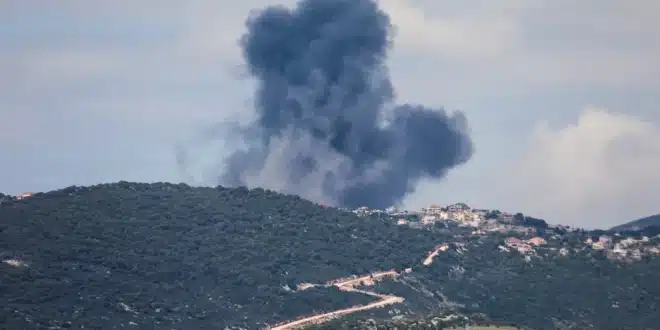In the early hours of the morning, Israeli drones launched a series of airstrikes in southern Lebanon, targeting multiple locations tied to Hezbollah activity. According to Lebanon’s state-run National News Agency (NNA), one of the drone strikes struck a concrete block manufacturing facility situated between the villages of Yaroun and Maroun al-Ras. Another strike targeted the al-Mahafer area near Aitaroun. These particular incidents caused material damage but no reported injuries.
Casualties Reported in Khiam and Yohmor
While some areas escaped casualties, two individuals were killed in separate Israeli strikes elsewhere in the region. Lebanon’s Ministry of Health confirmed that one person died in a drone attack on the town of Khiam, while another was killed in the nearby town of Yohmor al-Shaqeef when a motorbike was hit.
Further details from the NNA noted that the individual killed in Khiam was reportedly a civilian plumber conducting repairs on a rooftop at the time of the strike. Israeli defense forces, however, claimed both casualties were militants affiliated with Hezbollah’s elite Radwan force. The military asserted that both individuals had been actively involved in restoring Hezbollah’s operational infrastructure in areas near the Israeli border.
Background: Fragile Ceasefire and Persistent Hostilities
These recent incidents underscore the fragility of the truce agreement brokered in November, which aimed to ease more than a year of cross-border violence between Israel and Hezbollah. As part of the agreement, Hezbollah committed to repositioning its fighters north of the Litani River—approximately 30 kilometers (20 miles) from the Israeli-Lebanese border. The arrangement stipulated that only the Lebanese Armed Forces and United Nations peacekeeping troops would maintain an armed presence in the southern region.
Despite this accord, Israel has maintained a military presence in five key areas within southern Lebanon that it considers vital to its national security. Furthermore, Israel has continued conducting airstrikes within Lebanese territory, citing the need to neutralize threats posed by Hezbollah’s entrenchment and alleged rearmament efforts.
Strategic Implications
The latest developments point to an increasingly volatile situation in the border region, raising concerns that localized skirmishes could escalate into a broader confrontation. Hezbollah has not publicly responded to the latest strikes, but tensions remain high amid ongoing Israeli intelligence operations aimed at disrupting what they describe as Hezbollah’s attempts to reestablish military infrastructure.
These airstrikes mark another chapter in a prolonged conflict that has defied multiple international attempts at de-escalation. With neither side showing signs of retreat, the possibility of renewed widespread hostilities remains a looming threat for both nations and the broader region.


